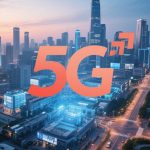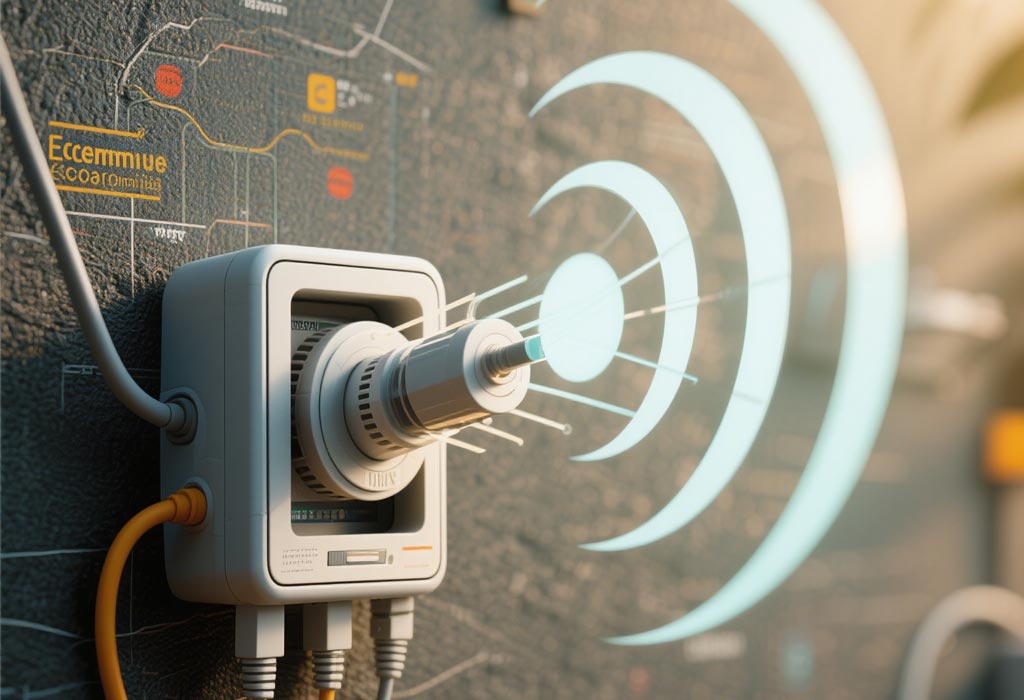Introduction
The internet, once a niche tool for academia and governments, has become the backbone of modern civilization. Its infrastructure—physical and wireless systems that enable data transmission—has evolved dramatically over decades. This article traces the technological milestones that transformed connectivity from the screeching dial-up modems of the 1990s to today’s ultra-fast 5G networks. It also explores emerging innovations like Low Earth Orbit (LEO) satellites and quantum communication, which promise to redefine global internet access in the 21st century.
1. The Analog Era: Dial-Up Modems and ISDN
The Birth of Consumer Internet Access
In the early 1990s, households and businesses first accessed the internet through dial-up modems. These devices converted digital computer signals into analog tones compatible with traditional telephone lines. The maximum speed of a 56 Kbps modem—often yielding real-world speeds of 40–50 Kbps—seems laughable today, but it revolutionized communication. Users could send emails, browse primitive websites, and participate in forums, albeit with frequent disconnections and agonizing load times.
Technical Limitations of Analog Systems
Dial-up’s reliance on the Public Switched Telephone Network (PSTN) created inherent bottlenecks:
- Line Congestion: Using the same frequencies as voice calls meant internet access blocked incoming/outgoing calls.
- Bandwidth Constraints: A single high-resolution image could take minutes to load.
- Geographic Inequality: Rural areas with outdated telephone infrastructure suffered from slower speeds.
ISDN: The First Step Toward Digital
Integrated Services Digital Network (ISDN), introduced in the late 1980s, marked the transition from analog to digital. By transmitting data over dedicated digital channels, ISDN offered speeds up to 128 Kbps (dual-channel) and reduced latency. However, its high installation costs limited adoption to businesses and wealthy households. Dial-up remained dominant until the early 2000s, when broadband technologies democratized high-speed access.
2. Broadband Revolution: DSL, Cable, and Fiber Optics
Digital Subscriber Line (DSL): Breathing New Life into Copper
DSL emerged in the late 1990s as a cost-effective way to repurpose existing copper telephone lines for broadband. Unlike dial-up, DSL used higher frequency bands, allowing simultaneous voice calls and internet use. Key variants included:
- ADSL (Asymmetric DSL): Prioritized download speeds (up to 24 Mbps) for residential users.
- SDSL (Symmetric DSL): Equal upload/download speeds for enterprises.
DSL’s performance depended on proximity to telephone exchanges. Users farther than 3 miles experienced severe signal degradation, leaving rural areas underserved.
Cable Internet: Leveraging Coaxial Networks
Cable internet utilized the same coaxial cables that delivered television signals. By employing DOCSIS (Data Over Cable Service Interface Specification) standards, providers achieved speeds up to 100 Mbps by the mid-2000s. However, shared bandwidth in neighborhoods often led to slowdowns during peak hours—a problem later mitigated by node splitting and DOCSIS 3.1 upgrades.
Fiber Optics: The Gold Standard
Fiber-optic cables, transmitting data as light pulses through glass strands, revolutionized speed and reliability:
- Speed: Single-mode fibers today support terabit-per-second (Tbps) capacities.
- Latency: Light travels 31% slower in copper than in fiber, making fiber critical for real-time applications like gaming and stock trading.
- Scalability: Wavelength-division multiplexing (WDM) allows multiple data streams on a single fiber.
Deployment challenges, such as the high cost of trenching urban areas, have slowed fiber adoption. Yet, initiatives like Google Fiber and national broadband plans in South Korea and Scandinavia showcase its transformative potential.
3. Wireless Leap: 4G LTE and 5G NR
4G LTE: Mobile Broadband for the Masses
Long-Term Evolution (LTE), launched globally around 2010, delivered mobile speeds up to 100 Mbps. Its orthogonal frequency-division multiple access (OFDMA) technology efficiently allocated spectrum to multiple users, while MIMO (Multiple Input, Multiple Output) antennas improved signal strength. LTE enabled video streaming, mobile commerce, and remote work—setting the stage for today’s app-driven economy.
5G New Radio (NR): A Three-Tiered Spectrum Approach
5G, deployed since 2019, operates across three frequency bands:
- Low-Band (Sub-1 GHz): Wide coverage but modest speeds (50–200 Mbps). Ideal for rural areas.
- Mid-Band (1–6 GHz): Balances speed (200 Mbps–1 Gbps) and range. Used in urban 5G deployments.
- Millimeter Wave (24–40 GHz): Ultra-fast speeds (up to 10 Gbps) but limited to short-range small cells.
Network Slicing: Customized Virtual Networks
5G introduces network slicing, which partitions a physical network into multiple virtual networks. For example:
- Enhanced Mobile Broadband (eMBB): Prioritizes bandwidth for 4K video streaming.
- Ultra-Reliable Low Latency Communication (URLLC): Supports mission-critical applications like autonomous vehicles (1 ms latency).
- Massive Machine-Type Communication (mMTC): Connects IoT devices in smart cities.
4. Future Horizons: 6G, LEO Satellites, and Quantum Networks
6G: Beyond 2030
While 5G is still rolling out, researchers are laying the groundwork for 6G. Expected features include:
- Terahertz (THz) Frequencies: 0.1–10 THz bands for unprecedented speeds.
- AI-Native Networks: Machine learning algorithms managing traffic in real time.
- Holographic Communication: 3D volumetric video for immersive telepresence.
Low Earth Orbit (LEO) Satellite Constellations
Companies like SpaceX (Starlink) and Amazon (Project Kuiper) are launching thousands of satellites 340–1,200 km above Earth to provide global broadband. Advantages include:
- Latency: 20–40 ms, comparable to terrestrial networks.
- Coverage: Remote regions, ships, and aircraft gain high-speed access.
Critics cite concerns like space debris and astronomical interference, but LEO networks could connect millions currently offline.
Quantum Communication: Unhackable Networks
Quantum key distribution (QKD) uses quantum mechanics to encrypt data. Photons transmitted via fiber or satellite encode encryption keys; any eavesdropping attempt disrupts their quantum state, alerting users. China’s Micius satellite and the EU’s Quantum Internet Alliance are pioneering this technology, which could secure financial, military, and healthcare data by 2030.
Conclusion
The internet’s infrastructure has progressed from analog curiosities to a hybrid ecosystem of fiber, 5G, and satellites. Each leap—whether DSL’s repurposing of copper or 5G’s network slicing—has addressed the limitations of its predecessor while unlocking new possibilities. Looking ahead, the fusion of terrestrial and space-based networks will democratize high-speed access, bridging the digital divide and powering innovations like autonomous industries and metaverse platforms. As 6G and quantum networks mature, one truth remains: connectivity will continue to shape human progress in ways we can only begin to imagine.















